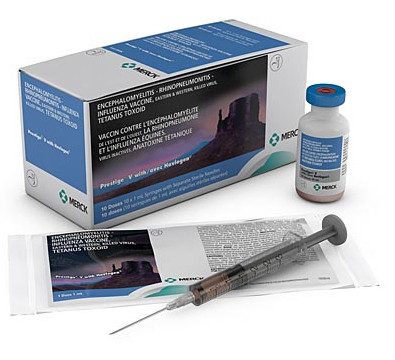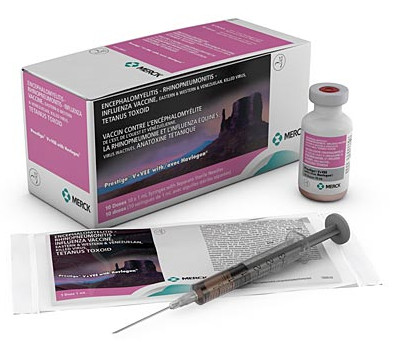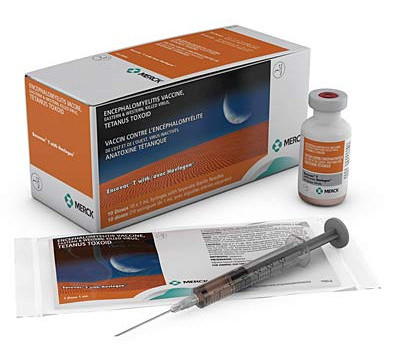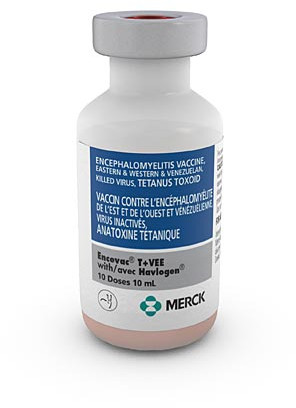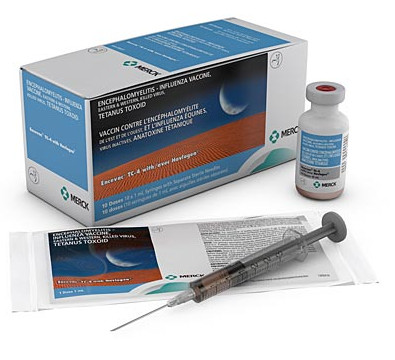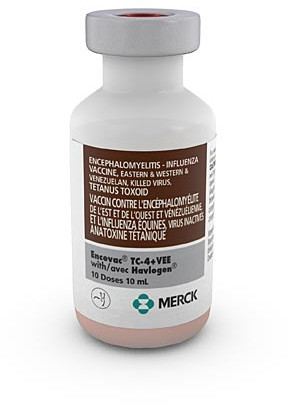Eastern & Western Encephalomyelitis
Disease Overview
A disease transmitted from horse to horse via mosquitos, and sometimes other bloodsucking insects.
Merck Animal Health Solutions
For Eastern & Western Encephalomyelitis
For vaccination of healthy horses 6 months of age or older, as an aid in the prevention of disease caused by Eastern and Western encephalomyelitis viruses and tetanus, as an aid in the control of respiratory disease caused by EIV, EHV-1 and EHV-4 and as an aid in reduction of virus shedding of EIV and EHV-1. Duration of immunity (DOI) has been shown to be at least six months for EIV.
For vaccination of healthy horses 6 months of age or older, as an aid in the prevention of disease caused by Eastern, Western and Venezuelan encephalomyelitis viruses and tetanus, as an aid in the control of respiratory disease caused by EIV, EHV-1 and EHV-4 and as an aid in reduction of virus shedding of EIV and EHV-1. Duration of immunity (DOI) has been shown to be at least six months for EIV.
For vaccination of healthy horses 6 months of age or older, as an aid in the prevention of disease caused by Eastern and Western encephalomyelitis viruses and tetanus.
For vaccination of healthy horses 6 months of age or older, as an aid in the prevention of disease caused by Eastern, Western and Venezuelan encephalomyelitis viruses and tetanus.
For vaccination of healthy horses 6 months of age or older, as an aid in the prevention of disease caused by Eastern and Western encephalomyelitis viruses and tetanus and as an aid in the control of respiratory disease and as an aid in the reduction of virus shedding caused by EIV. Duration of immunity (DOI) has been shown to be at least six months for EIV.
For vaccination of healthy horses 6 months of age or older, as an aid in the prevention of disease caused by Eastern, Western and Venezuelan encephalomyelitis viruses and tetanus and as an aid in the control of respiratory disease and as an aid in the reduction of virus shedding caused by Equine Influenza Virus (EIV). Duration of immunity (DOI) has been shown to be at least six months for EIV.
Clinical Signs
The early clinical signs of EEE and WEE may be so mild that they go unnoticed, and may include transient fever and depression, lasting up to five days. Many cases of WEE do not progress beyond this stage. However, EEE is more likely to progress to central nervous signs, which may progress from depression and sleepiness to aggression and agitation. Late in the disease affected horses may develop blindness, head pressing, circling, head tilt, quivering face and leg muscles, and paralysis of the throat and tongue. Terminal horses will usually be down for several days before dying. Death from EEE occurs in 75 – 80% of horses that develop neurologic signs, and in 15 – 30% of those with WEE. Survivors show gradual improvement over weeks to months, but complete recovery is rare. Horses that recover from sleeping sickness often continue to show depression, abnormal behavior, and difficulty in walking.


